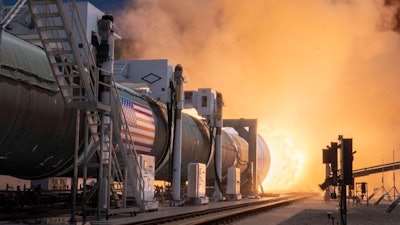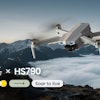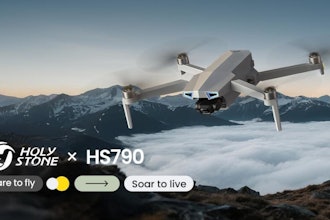
Northrop Grumman Corporation conducted a full-scale static fire of NASA’s Booster Obsolescence and Life Extension (BOLE) solid rocket booster. This was the first demonstration test of the enhanced five-segment solid rocket motor, the world’s largest and most powerful segmented solid rocket motor built for human spaceflight.
Over 700 data channels assessed the 156-foot-long solid rocket motor as it fired for just over two minutes, producing more than 4 million pounds of thrust from a single booster.
Most Read on Design & Development Today:
- Ford Absent from 20 Most American-Made Autos List
- Auto Giant Files for Bankruptcy, Blames Tariffs
- Hexagon Launches AEON, A Humanoid Built for Industry
- RTX's Pratt & Whitney to Provide Mass Propulsion for Leidos' Small Cruise Missile Program
Leveraging Northrop Grumman’s experience in solid rocket motor manufacturing, BOLE improves on previous designs by replacing key components no longer in production. The booster features a composite case design, updated propellant formulation and advanced components to increase booster performance by more than 10 percent compared with the current five-segment Space Launch System (SLS) booster design.
The carbon fiber composite case enables better booster performance, faster manufacturing, and aligns with commercial standards by providing commonality among our infrastructure, supply chain, and manufacturing operations. Other aspects of the BOLE design, including metallic components, allows the company to support a U.S.-based supply chain of American manufacturers.
Compared with its predecessor, this evolved booster provides another five metric tons of payload to lunar orbit.
Jim Kalberer, vice president, propulsion systems, Northrop Grumman said, “Today’s test pushed the boundaries of large solid rocket motor design to meet rigorous performance requirements. While the motor appeared to perform well through the most harsh environments of the test, we observed an anomaly near the end of the two-plus minute burn. As a new design, and the largest segmented solid rocket booster ever built, this test provides us with valuable data to iterate our design for future developments."
Click here to subscribe to our daily newsletter featuring breaking engineering industry news.






















